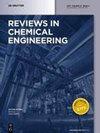从被动有机硅到新兴智能有机硅
IF 6.6
3区 工程技术
Q1 ENGINEERING, CHEMICAL
引用次数: 5
摘要
摘要硅酮具有卓越的性能,在我们的日常生活中几乎是必不可少的。在大多数经典应用中,它们起着被动的作用,因为它们覆盖、密封、绝缘、润滑、防水、耐候等。然而,有机硅科学和工程具有高度创新性,寻求开发满足市场需求的新化合物和材料。因此,硅酮的不同寻常的性质,加上化学基团功能化,使硅酮逐渐从被动材料进化为主动材料,符合“智能材料”的概念,能够对外部刺激做出反应。在这种情况下,聚硅氧烷的固有性质通过旨在连接反应性或官能团的各种化学修饰来增强,和/或通过适当的交联模式或用合适的填料(陶瓷、磁性、高介电或导电材料、生物活性等)进行工程来增强,以增加新功能并开发高价值材料。综述了反映智能硅酮领域技术现状的文献和数据,如热塑性、自修复能力、表面活性、机电活性和磁致伸缩性、热响应性、光响应性和压电响应性。本文章由计算机程序翻译,如有差异,请以英文原文为准。
From passive to emerging smart silicones
Abstract Amassing remarkable properties, silicones are practically indispensable in our everyday life. In most classic applications, they play a passive role in that they cover, seal, insulate, lubricate, water-proof, weather-proof etc. However, silicone science and engineering are highly innovative, seeking to develop new compounds and materials that meet market demands. Thus, the unusual properties of silicones, coupled with chemical group functionalization, has allowed silicones to gradually evolve from passive materials to active ones, meeting the concept of “smart materials”, which are able to respond to external stimuli. In such cases, the intrinsic properties of polysiloxanes are augmented by various chemical modifications aiming to attach reactive or functional groups, and/or by engineering through proper cross-linking pattern or loading with suitable fillers (ceramic, magnetic, highly dielectric or electrically conductive materials, biologically active, etc.), to add new capabilities and develop high value materials. The literature and own data reflecting the state-of-the art in the field of smart silicones, such as thermoplasticity, self-healing ability, surface activity, electromechanical activity and magnetostriction, thermo-, photo-, and piezoresponsivity are reviewed.
求助全文
通过发布文献求助,成功后即可免费获取论文全文。
去求助
来源期刊

Reviews in Chemical Engineering
工程技术-工程:化工
CiteScore
12.30
自引率
0.00%
发文量
37
审稿时长
6 months
期刊介绍:
Reviews in Chemical Engineering publishes authoritative review articles on all aspects of the broad field of chemical engineering and applied chemistry. Its aim is to develop new insights and understanding and to promote interest and research activity in chemical engineering, as well as the application of new developments in these areas. The bimonthly journal publishes peer-reviewed articles by leading chemical engineers, applied scientists and mathematicians. The broad interest today in solutions through chemistry to some of the world’s most challenging problems ensures that Reviews in Chemical Engineering will play a significant role in the growth of the field as a whole.
 求助内容:
求助内容: 应助结果提醒方式:
应助结果提醒方式:


